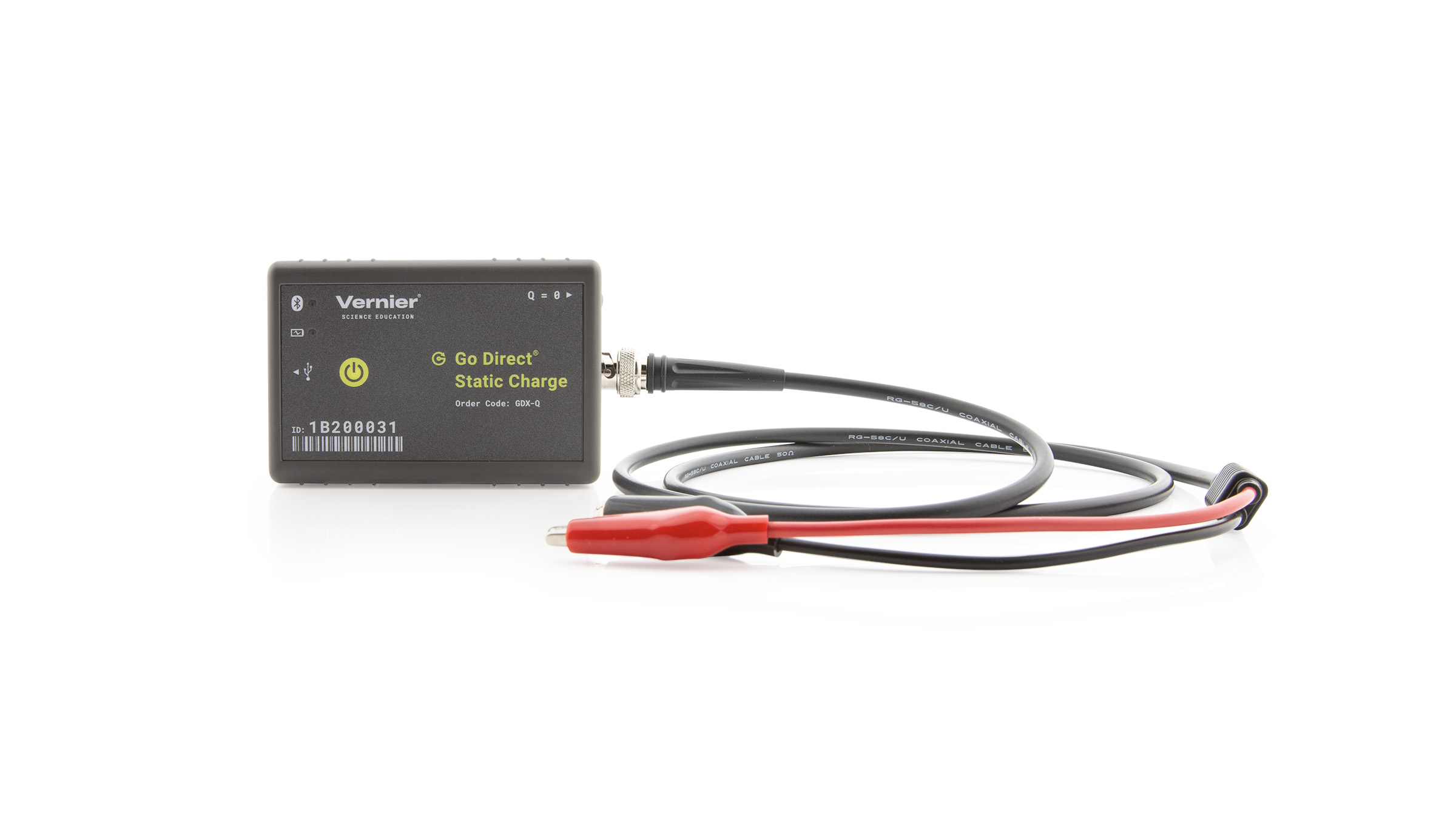[Product GDX-Q]

Troubleshooting
General: Press the power button on the sensor to turn it on. Connect your sensor as described in the Getting Started instructions for your device.
- Primary Test: Zero the sensor by connecting the red and black alligator clips together or to a common ground. Press the zero (Q = 0) button and hold it in for several seconds. This discharges the internal capacitors so that the two terminals are at equal potential. The reading should become very close to zero (It is OK for the reading to be a little above or below zero).
- Secondary Test: Disconnect the alligator clips from each other and connect the black cable to ground and the the red cable to a separate conductor such as the Faraday pail from [Product ESK-CRG]. Bring a charged object near to this conductor (e.g. inside the Faraday pail) and you should see a reading from the sensor that is alike to the charge on the charged object.
Additional Troubleshooting
- What types of activities can I perform with the Charge Sensor?
- Why does the Charge Sensor value drift upward during experiments?
- Go Direct sensor does not connect to LabQuest 2 via Bluetooth.
- How many wirelessly connected Go Direct sensors can I use for data collection at the same time?
- Troubleshooting Bluetooth Connections with Go Direct Sensors
- What can I do if a Go Direct sensor's Bluetooth LED flashes red and green when I try to connect to it and the connection fails?
- Will my device work with Go Direct Sensors via Bluetooth?
- How do I know if my LabQuest will work with Go Direct Sensors and Go Wireless devices?
Specifications
- Range: ±100 nC (±10 V)
- Maximum input: ±150 V
- Typical bias input current: 0.003 pA
- Input capacitance: 001 µF
- Instrument time constant: 0.1 s
- Connections:
⚬ Wireless: Bluetooth® v4.2 (wireless range 30 m unobstructed)
⚬ Wired: USB 2.0 full speed - Battery: 300 mA Li-Poly
⚬ Battery Life (single, full charge): ~24 hours continuous data collection
⚬ Battery Life (lifetime): 2 – 5 years (typical)
Calibration
Calibrate? No. You do not need to calibrate Go Direct Static Charge. We have set the sensor to match our stored calibration before shipping it.
Battery Troubleshooting
- If the sensor can be turned on when connected by USB but not when disconnected from USB, the battery either needs charging or has reached its end of life and can no longer hold a charge.
⚬ First, try charging the sensor for several hours. - If the sensor still won’t turn on when disconnected from USB, try swapping the battery with a working sensor to see if the problem follows the battery or stays with the sensor.
⚬ If the problem stays with the sensor, the battery is probably not the issue.
⚬ If the problem follows the battery, the battery has likely reached its end of life. - If you intend to use this sensor wirelessly, its battery will need replacing.
Go Direct® 300 mAh Replacement Battery (GDX-BAT-300 ) - See How do I remove or replace a Go Direct battery? for more information (including a video).
Rechargeable batteries are covered by a one-year warranty.
Batteries should last two to five years in typical use.
Related Products
- Micro USB to USB-C Cable (
CB-USB-C-MICRO ) - Go Direct® Charge Station (
GDX-CRG ) - Electrostatics Kit (
ESK-CRG ) - High-Voltage Electrostatics Kit (
HVEK-CRG ) - Electrostatic High-Voltage Genecon (
HVEK-GEN ) - Charge Sensor (
CRG-BTA )
Replacement Parts
- Go Direct® 300 mAh Replacement Battery (
GDX-BAT-300 ) - Micro USB Cable (
CB-USB-MICRO )
